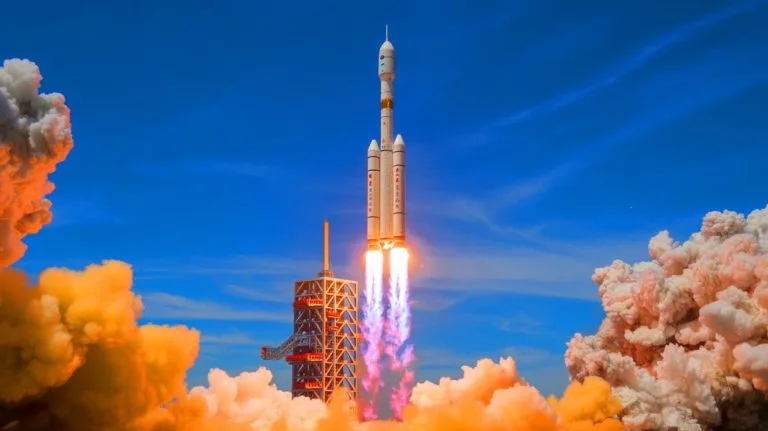| IN A NUTSHELL |
|
In recent developments, China has accelerated its space program with two orbital launches within a mere 24-hour window. Among them was the deployment of a mysterious satellite from the Yaogan series. Officially, these satellites serve scientific and disaster prevention purposes. However, many analysts view them with skepticism, suspecting a military reconnaissance mission. The official narrative contrasts with Western perspectives that see the Yaogan series as a civilian façade for military reconnaissance. This raises questions about the true intentions behind these launches and the broader implications for global space dynamics.
China’s Rapid-Fire Space Launches
China’s ambitious space program took a significant leap forward with two orbital launches in less than a day. This rapid sequence underscores Beijing’s commitment to expanding its presence in space. The centerpiece of this effort was the launch of the Yaogan-45 satellite. The event took place on September 9th, when a Long March 7A rocket lifted off from the Wenchang Spacecraft Launch Site, located on Hainan Island. The timing and frequency of these launches have caught the attention of international observers.
The Shanghai Academy of Spaceflight Technology (SAST), a subsidiary of the China Aerospace Science and Technology Corporation (CASC), was responsible for developing Yaogan-45. Officially, the satellite is designated for scientific experiments, earth resource studies, agricultural yield estimation, and disaster prevention. Despite these stated purposes, skepticism remains prevalent. For many, the Yaogan series is emblematic of China’s dual-use strategy—combining civilian and military objectives under a single program.
Unveiling the Yaogan Series’ Dual Nature
Since their inception in 2006, the Yaogan satellites have been shrouded in ambiguity. While China maintains their civilian application, Western analysts often perceive them as instruments of military reconnaissance. These satellites employ sophisticated technologies, including optical observation, synthetic aperture radar (SAR), and electronic signal collection. Such capabilities are typically associated with intelligence gathering activities.
The launch of Yaogan-45 diverged from the usual trajectory for the Long March 7A rocket, which typically places satellites into a geostationary transfer orbit. Instead, this mission targeted a medium orbit, a first for this particular rocket model. The modifications required to achieve this new orbit—strengthening the rocket’s fuel tanks and increasing engine ignition sequences—support its dual-use potential. This versatility naturally fuels speculation about its military applications.
Strategic Implications of Orbital Positioning
Yaogan-45’s orbital journey did not end with its launch. Following deployment, it joined another satellite, Yaogan-41, which had been launched in December 2023. Both satellites now occupy a higher orbit than their predecessors in the series. This strategic positioning allows for a broader coverage area and extended surveillance time over specific regions, albeit at the cost of reduced image precision. Such a compromise is not new, as other spacefaring nations have adopted similar tactics to monitor critical areas, including maritime routes and sensitive borders.
This orbital configuration inevitably draws the attention of international observers. The alignment with practices historically linked to military operations further amplifies concerns. While labeling Yaogan-45 as a “spy satellite” might be an oversimplification, dismissing its potential military applications would be equally naïve. China’s space endeavors appear to be multifaceted, simultaneously advancing surveillance capabilities and genuine scientific missions like Tianwen-2.
Lack of Transparency Fuels International Suspicion
The crux of the international community’s apprehension lies not in the satellite itself, but in the opaque nature of China’s communication. The deliberate ambiguity surrounding the Yaogan series and China’s broader space strategy leads to heightened suspicion. Such opacity is not uncommon in geopolitical maneuvering—saying little to provoke speculation has long been a strategic approach.
While many nations, including the United States and European countries, operate satellites with dual civilian and military purposes, China’s perceived lack of transparency stands out. It raises questions about the broader implications of its space activities, particularly in the context of global security. This opacity complicates efforts to build trust and foster collaboration in space exploration.
The recent launch of Yaogan-45 highlights the complexity of interpreting China’s space ambitions. While there is no immediate cause for alarm from a scientific perspective, the lack of transparency remains a source of concern. As China continues its ascent in space, how will the international community balance scientific collaboration with security apprehensions?
Did you like it? 4.6/5 (27)







Wow, two rockets in 24 hours? China’s really stepping up their game! 🚀
Two rockets in 24 hours? China’s got some serious rocket fuel! 🚀
Is it just me, or does the Yaogan-45 sound like something straight out of a spy movie? 🤔
Why does the Yaogan-45 satellite raise so many eyebrows? 🤔
Thank you for the detailed article. It’s fascinating to see how space technology evolves.
Thank you for the detailed analysis. It’s always intriguing to read about China’s space advancements.
When they say “mysterious,” do they mean “we have no idea what it’s doing up there”?
China’s transparency in space activities is as clear as mud. 🤷♂️
Can anyone explain what exactly “strategic surveillance” entails?
Could someone explain how a higher orbit affects image precision?
Honestly, I think this is just the beginning of a space race 2.0. Who’s with me? 🌌
Two launches in one day? They’re on a roll! 🏆